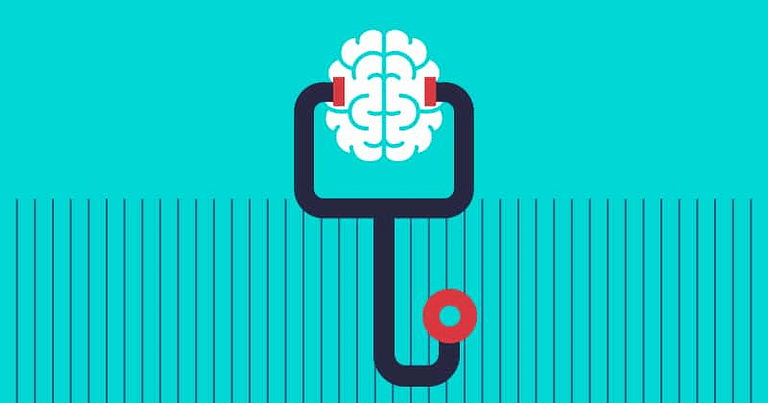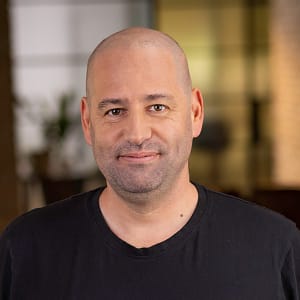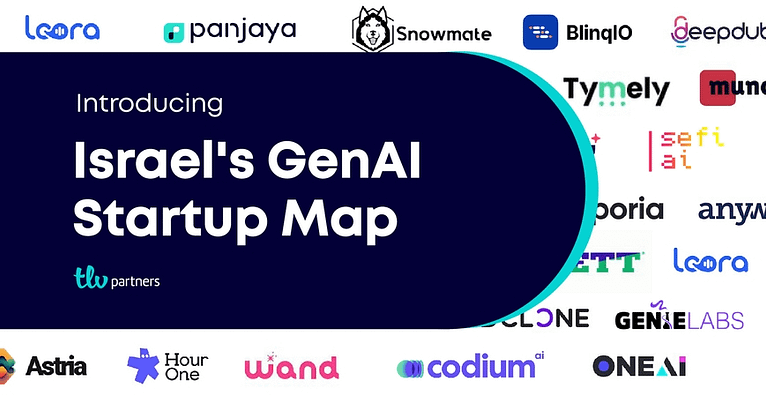A giant leap for humanity:
The thesis behind TLV Partners’ seed investments in Aidoc, Immunai, Deepcure, and Canopy Immuno-Therapeutics
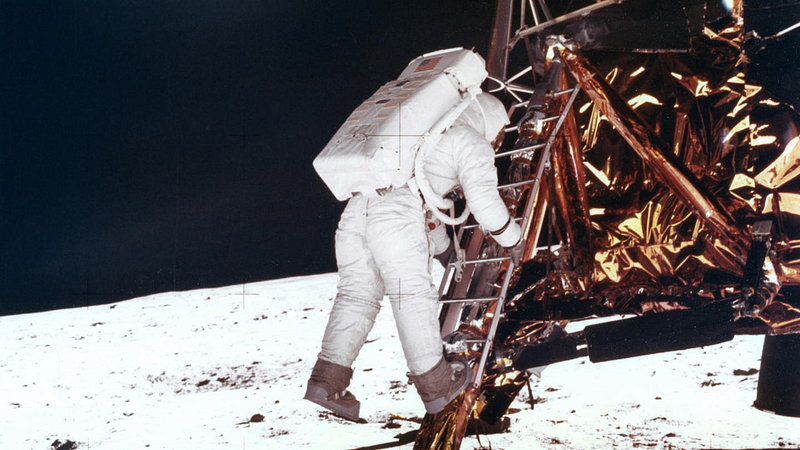
Medicine has gone through slow, careful, iterative progress, which is understandable when death is on the line.
It is a privilege to have invested in companies that pave the way forward for medical advanced and to witness firsthand how improvements in the field that used to take decades now take years, and they continue to accelerate.
Quoting Elad Walach, co-founder and CEO of Aidoc:
“Almost no hospitals were using AI in 2018. By now (Q4 2020), hundreds are already using it in practice. It’s exciting to be in at the forefront of this revolution.”
We are facing not just a step but a giant leap for humankind in the fields of medical diagnosis and treatment.
Abstract
Medicine includes two disciplines, diagnosis, and treatment. Both have made plodding, cautious progress throughout the ages.
We believe AI augments and empowers these disciplines. As a result, I have led four seed investments in companies that are at the forefront of this evolution: Aidoc (2016), Immunai (2018), Deepcure (2019), and Canopy Immuno-Therapeutics (2020).
Each of these companies falls into the domains of diagnosis, treatment, or both.
While cutting-edge AI technology (self-learning unsupervised rewards-based reinforced, neural-network) is crucial, keeping it behind the scene, with the right interface, wins the battle.
It is not enough for AI technology to provide some abstract value. It must integrate naturally into a doctor’s existing workflow. Without this seamlessness, it will not get the chance to demonstrate the incredible value it provides.
The trajectory is unquestionable: AI is rapidly transforming diagnosis, treatment, and the science of medicine.
To quote Dr. Kfir Oved, founder, and CEO of Canopy:
“There’s strong speculation that it’s only a question of time until AI will become the new norm in diagnosis and working without it will be considered malpractice. At that point it will not be ot a matter of if you agree to work with it but rather if you are allowed to work without it. The first public lawsuit of a physician who did not diagnose something that AI could easily have, will be the end of human medicine as we know it.”
Background
Medicine, although a continually innovating field, keeps one foot in its ancient roots. The Hippocratic oath — primum non nocere — undertaken by physicians for 2500 years, is only the most obvious example of that. The very process of treating the sick remains mostly unchanged, focusing on the diagnosis, treatment, and science driving both ahead.
Progress has carefully been made in those areas, but at a pace that reflects the consequences of mistakes.
My thesis is that recent technological advances, namely AI, done with the right interface, will allow a giant leap forward in medical diagnostic and treatment.
A knowledge-worker (a radiologist, for example) appropriately augmented and with AI in their workflow is empowered and gains “superpowers.” He or she is now, by virtue, “the best in the world.”
The elusive AGI (Artificial General Intelligence) looked for by scientists (and novelists) for centuries is, in our opinion, the amalgamation of silicon and flesh. Or in other words — IAA. Intelligence Augmentation and Amplification.
When AI and a doctor seamlessly work together, they are leveraging each other’s skills. In a sense creating a chimera where the combination of both is 1+1 = 10. We will further discuss this when we review our investment in Aidoc, Immunai, Deepcure, and canopy Immuno-Therapeutics.
On Aidoc and augmenting radiologists
Aidoc is the undisputed market leader in applying AI to empower radiologists and augment their workflow. Their secret to success was based on an understanding of their radiologist partners. Radiologists fear missing a critical time-sensitive diagnosis due to an oversight or an incorrect triage that delayed the case from reaching them on time. The sad reality is that this happens too often. Radiologists are, after all, only human, as is the triage team.
Aidoc’s revolutionary product introduced an ‘always on’ assistant that jointly examines every scan with the radiologist. This is a historic moment! For the first time, the diagnostic process is revolutionized by augmenting and empowering a medical professional’s intellectual process with a machine.
What is equally radical about this process (thanks to Aidoc’s wisdom) is that the radiologist does not need to change how they work. The augmentation interfaces naturally with their current workflow. Those who follow current medical processes can employ futuristic technologies without learning an entirely new operating way. Having Aidoc in operation after the radiologist witnesses what it can do, reduces the radiologist’s stress level.
To quote Dr. Kfir Oved, founder, and CEO of Canopy, to clarify an important point:
The role of AI is to increase the level of compassion and humane medicine, not to replace humans (at least for now). Physicians should be empowered rather than replaced.
Which has been Aidoc’s own thesis and focus from day one.
Of course, so long as the company has managed to ‘crack’ the AI / UI / FDA barriers, as Aidoc successfully has.

I am sure (and I’m not alone) the day is near when no radiologist agrees to (or is allowed to) work without Aidoc’s AI monitoring their cases.
I’ll boldly state my vision for Aidoc: every radiation scan in the world, 24×7, going through Aidoc’s life-saving AI system. When we get there, we can pause and think about what’s next.
More and more doctors report that Aidoc’s preemptive screening has alerted them to life-threatening situations that required immediate attention, but triage missed. Had it not been spotted by Aidoc’s proactive screening, the results would likely have been morbid.
Aidoc’s early success was helped by the field of radiology being ripe: it has a high volume of time-sensitive exams, and unfortunately, but only naturally, a higher than accepted missed diagnosis rate by human radiologist.
A solution that naturally solves all that and increases the hospital (or private radiology group) ROI is bound to proliferate. And it does.
To quote Dr. Kfir Oved:
“Aidoc has a self-growing moat — once a tool is out in the field (e.g. Aidoc), it is processing exponentially growing amounts of data, compared to the data it was trained with. This growing access to medical data is a huge opportunity for continuous improvement”
On Immunai and decoding the immune system
The co-founder and CEO, Dr. Noam Solomon (double Ph.D. in Math and Computer Science and former post-docs from MIT and Harvard) and CTO Luis Voloch (MIT, Palantir, MyHeritage, Forbes 30 under 30) decided they want to apply their considerable talents to the benefit of humankind.
Immunai is decoding the most complex system of them all — the immune system, for better therapeutics.
Immunotherapies are today’s most promising treatments for cancer. Unlocking the immune system is believed to significantly accelerate drug development from working blindfolded to significant visibility on the impact of various attempts on a patient’s immune system with different drugs, including combination treatments. That in itself should accelerate personal treatment, which is likely the only way to deal with the endless amount of different treatments for the wide variety of indications and therapies.
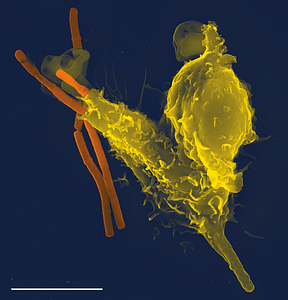
All human diseases (as recently discovered, cancer included) involve the human immune system. So do all immunotherapy treatments. However, our knowledge of the immune system is still embarrassingly small. The theory is that it is a chaotic system.
Until recently, the tools required to gather insights from the immune system did not exist at a granular enough detail. Immunai falls under our thesis of improving the therapeutic process. Immunai allows pharmaceutical companies to deeply see how their drugs affect the most hidden cells of the body, and then correlate these immune surrogate endpoints with clinical endpoints, leading to novel therapeutic discoveries.
Immunai has created the world’s most advanced single-cell sequencing laboratory. Along the way, they are amassing the world’s largest single-cell bio-bank, which they create in their lab. Their 100x largest multi-omic single-cell immune atlas is from the data that they generate themselves! Also, to complement the wet-work and bio-work, they add their AI to integrate the database better and reduce the non-biological noise in the data. Like other parts of their organization, it is at the cutting edge: transfer and multi-omic AI, focusing on discovering novel body cells, identifying and grouping them, deducing and monitoring how illness and medicine impact them.
To quote Dr. Noam Solomon, co-founder, and CEO of Immunai:
“If you take a problem, such as decoding the immune system — this is not a well-defined game with clear board arrangements, inputs, outputs, and outcomes. So you have many hypotheses to make, for example, normalize the immune systems of different people in the database, measured in slightly different environments.
Before you figure out a standardized way to normalize the environment and make sure that you leveled the field, nobody can say what the rules of the game are. A lot of what our artificial intelligence is doing lies exactly in normalizing the different environments and making sure there is “one board game” to be played by us. Then we can let the power of the AI run loose and figure out new ingenious ways to decode the underlying mechanisms underlying our immune system, i.e., create a genuinely new way to generate intelligence towards the problem at hand whose rules are now laid down.
On top of all that, Immunai is leveraging cutting-edge AI to mine therapeutic insights from our proprietary immune cell atlas that has been normalized and integrated with, you guessed right, AI. So it’s 2-in-1 AI if you will :)”
Immunai’s staff includes more than 30 Ph.Ds from the world’s leading universities. All are coming together (literally — another first for me to witness — they moved to Israel from all over the world, to take part in this mission) to solve this Nobel worthy challenge.
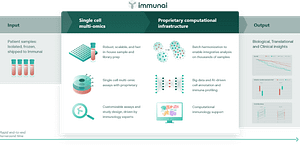
Immunai has a distinctive trait. It has the additional potential to fall into our diagnostics theme and not remain only in the treatment thesis ‘bucket.’
Immunai could potentially be the next generation of blood testing. They provide previously impossible to see early indications about how a patient is doing, both in terms of initial diagnosis of an illness and the efficacy of the treatment provided. That is not their current focus. Immunai has more immediate and more mysterious cells to fish out first.
A sneak peek is that the company has grown 4X in the last year (which is not yet over!) in multiple domains, revenue included. They have over-exceeded their investors’ wildest hopes. Achieved the unthinkable in terms of the lab they’ve built, the team they’ve recruited, and the results discovered. Despite being an investor, I can objectively say WOW.
On Deepcure and novel drug discovery
Deepcure revolutionizes the process of finding new therapeutic molecules, towards novel drug discovery and subsequently becoming a next-generation pharma company, building the first end-to-end AI-driven drug discovery pipeline to power the next decades of therapeutic development.
Today, a pharmaceutical company spends upwards of $2.6billion for every successful drug brought to market. This staggering spending has resulted in only 2,646 small-molecules approved drugs! That’s in over 50 years of effort. And only than 4,051drugs overall. The trillions of dollars spent here point to a drug discovery process with multiple flaws. I’m skipping the part of the target protein discovery. This is outside the remit of Deepcure and not the most significant problem.
The first flaw in a series is that the discovery process has not changed over 50 years and remains based on intuition and sequential processes. A chemist picks a target molecule (based on past results of an ‘almost successful’ molecule or pure instinct) and begins testing it one test-stage after the other. Every time a molecule is not ‘good enough’ — it gets discarded.
Any pure software person cries “gevalt” now coupled with “Oy Vey” as we see two huge problems. The first is coming up with the initial target molecule: The right AI should do a better job. The second is that this problem calls for multi-parameters parallel optimization for testing the molecule through the various tests.
A molecule might not be best in class in any specific test, but still, prove to be best in class when weighing all tests together. That is the critical realization behind Deepcure.
Deepcure has created the world’s largest repository (10¹²) of unique small molecules to support novel drug candidates’ discovery. What is unique about these molecules is that they are all “producible,” e.g., molecules that can be, manufactured today (in small or large amounts) in contrast to other theatrical potentially “interesting” molecules, which, while may have relevant qualities, there’s no practical way to produce them.
Quoting Dr. Kfir Oved:
There is a critical role in the creation of high-quality data. Many can do high-quality and smart AI. But…there are two big secrets: a. You are only as good as your data (curated, cleansed, unique, proprietary), and b. “Asking the right questions is half the answer”. The answers to many questions are just not valuable enough.
This is why High-Quality Data (e.g. Immunai, Deeccure) and “The right question” must go hand in hand with great data scientists, but cannot be replaced by them.
Deepcure’s generated repository of molecules only includes molecules that we can create today in small or large quantities. They apply their sophisticated multi-parameter AI to search this enormous database of lab producible molecules for potential ‘leads.’
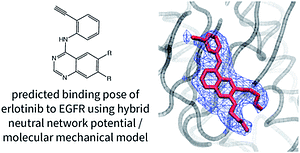
After the Deepcure AI recommends potential molecules (per investigated target protein), the top candidate molecules are manufactured via remote bio-robotic labs. Other remote-robotic bio laboratories test the resulting molecules. These results are entered into the AI to feed its reinforcement loop. In the future, Deepcure plans to own and enhance parts of this process inhouse, to increase efficiency and throughput.
I can provide a sneak peek at some early (incredible) results. Deepcure has already demonstrated it could have saved millions (if not billions) by re-discovering previous drugs. They have also assembled a set of novel promising ‘lead’ compounds being tested today, and show excitingly positive results.
Deepcure’s business goal is to become a next-generation pharma company, building the first end-to-end AI-Driven drug discovery pipeline. Deepcure falls under our thesis of improving the therapy side of medicine.
A key question a VC asks is, why now? What prevented a company from starting previously? In the case of Deepcure, It is a company that could not have existed even a few years ago. The stars aligned to create this particular moment: access to virtually limitless compute power, breakthroughs in AI and lab molecule productions, and automated robotic laboratories that allow rapid results via outsourcing parts of the wet-work. Deepcure’s current results are phenomenal, and I expect you’ll hear about them soon, a lot more.
We must emphasize Deepcure’s early realization of the importance of their solution’s interface.
1) On the molecules database side, all molecules are fully synthesizable and presented to medicinal chemists in their language for chemical reactions and synthetic routes;
2) A team that combines the best experts in drug discovery with the best minds in AI R&D;
3) Related to the Chess / AI interface analogy from my previous post, the Deepcure multi-parameter optimization framework provides their medicinal chemists the superhuman power to look many “moves” (optimization steps) into the future by predicting the outcome of every potential molecular move.
4) The ability to quickly (light speed in comparison to current pharmaceutical companies methods and timelines) progress between a molecule structure predicted by their AI, fabrication of that molecule, testing it, and feeding the result back to the reinforcement AI engine, is unparalleled and their secret weapon.
All this is what gives Deepcure its extraordinary superhuman power and breaks the mold on how drugs get developed.
On Canopy Immuno-Therapeutics and curing disease
On Canopy Immuno-Therapeutics and curing disease:
Canopy Immuno-Therapeutics is in stealth mode, so we can only provide a teaser about its mission and its incredible founder.
Canopy is a pre-clinical biotech company engaged in developing a novel immunotherapeutic approach for dozens of immune-related disorders.
This company falls under our treatment theme. They dare to dabble with the word most doctors cannot say — “complete cure” using a novel and already promising (in animal models) approach.
Despite the company’s solid scientific and technological foundations, Canopy is tethering AI forces during almost every step along the drug development process. Many of the processes that are traditionally being done by experimental “trial and error” are being performed using AI-based tools, including molecular modeling, molecular design, molecular interactions, models for predicting patient responses, theranostics, etc.
Founder and CEO Dr. Kfir Oved, list of accomplishments is too long to list in a single page.
Although I can’t detail the company yet, I can wax lyrical about its impressive founder. I believe this gives credence to the depth and breadth of the potential we’re seeing.
Amongst Kfir’s achievements: Kfir has over 15 years of combined industry and academic experience, leading interdisciplinary teams combining Biotechnology and Biochemistry, Applied Immunology, Engineering, and Big Data in multiple clinical applications. Kfir co-founded MeMed Dx and is serving as its Chairman of the Board. Kfir served for over a decade as MeMed’s CTO, where he led the inception, development, and clinical validation of the entire MeMed technology suite, including the MeMed BV™ technology, and the MeMed Key™ platform, from an initial concept to development completion. He holds a B.A. in Biology (Summa Cum Laude), B.Sc. in medicine (Magna Cum Laude), Ph.D. in molecular immunology, and six years of training in the Technion School of Medicine.
Kfir is the co-author of 126 granted and pending patents, the author of 16 peer-reviewed publications, and the recipient of multiple research excellence awards, including the prestigious Gutwirth Excellence award and the Wolf Award for research students. Kfir was listed as one of the top 25 voices in Precision Medicine for 2019 by BIS research.
It’s a teaser to some really exciting updates soon to be published by Canopy.
Summary
To revisit our central thesis: AI has the potential to revolutionize the future of the diagnosis and treatment of diseases. We are not far from a major deflection point were NOT using AI will become malpractice.
The cruciality of the interface used to empower a doctor can’t be overemphasized. AI’s cutting edge and ability to tackle problems that could not be addressed previously comes at best in second place.
It’s not often we develop a strong thesis in an area outside our usual master domain (Enterprise Software). It’s rarer still to find four seed-stage companies to invest in, which meet all aspects of our thesis and complement each other.
They serve as mutual hubs. That is an unusual occurrence in our everyday enterprise investment experience. There, each company “struggles” alone, and there is very little cross-pollination. Therefore it was a surprise and a joy to see how beneficial these four startups are already to one another.
Above all, we feel fortunate and thankful that these four startup founding teams, each of which could have raised their seed funding from any VC they’d pick, selected us to be part of their journey.
On a personal note, I can share that working with these companies has taught me an important lesson. Investing in companies who save lives and improve the quality of life brings tremendous satisfaction that no other investment in traditional software companies does.
Thanks
My thanks go to Kfir Schreiber, Elad Walach, Zvika Orron, Dr. Noam Solomon, Dr. Kfir Oved, Brian Sack, Yonatan Mandelbaum, Amiad Soto, Koby Soto, Jo Barrow, Natalie Refuah, Amit Frenkel, and Ariela Shoam for taking the time to review many early drafts and provide invaluable feedback. Thank you.
